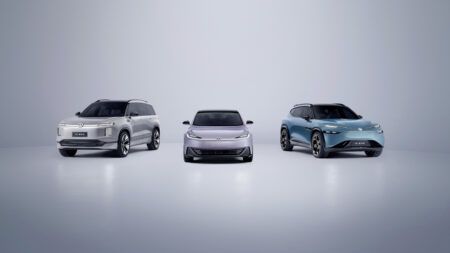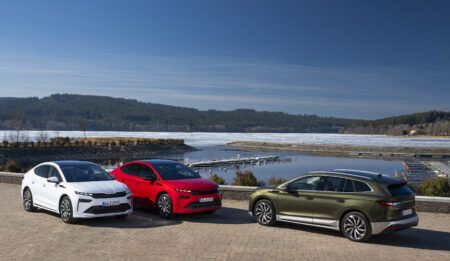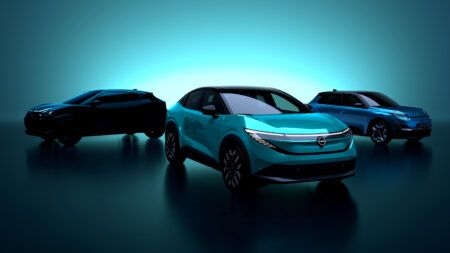UK prime minister Boris Johnson has announced the country will be expediting the ban on the sale of new petrol, diesel and hybrid engine passenger cars by 2035, instead of 2040, which has caused mixed reactions among industry experts.
To meet the UK’s 2050 net-zero emission ambition, the decision was announced today at the COP26 event, that the UK intended to bring the ban on the sale five years earlier as the previous 2040 deadline lacked sufficient ambition. It claimed the transition to electrification needs to be viewed as a reality rather than a vision. It also claimed that in order to meet the 2050 net-zero emission target, it would not give enough time if the ban was imposed in 2040.
The UK’s initial 2040 ban was due to be behind several other countries across Europe including Ireland, the Netherlands and Sweden, which have set a ban from 2030.
However, to bring the ban forward by five years will have an impact on the electric vehicle manufacturing and supply.
Mike Hawes, chief executive of the Society of Motor Manufacturers and Traders (SMMT), claims the result could put a strain on the supply chain and questions whether the UK is ready to support mass adoption this quickly:
“It’s extremely concerning that the government has seemingly moved the goalposts for consumers and industry on such a critical issue. Manufacturers are fully invested in a zero-emissions future, with some 60 plug-in models now on the market and 34 more coming in 2020. However, with current demand for this still expensive technology still just a fraction of sales, it’s clear that accelerating an already very challenging ambition will take more than industry investment. This is about market transformation, yet we still don’t have clarity on the future of the plug-in car grant – the most significant driver of EV uptake – which ends in just 60 days’ time, while the UK’s charging network is still woefully inadequate.
“If the UK is to lead the global zero emissions agenda, we need a competitive marketplace and a competitive business environment to encourage manufacturers to sell and build here. A date without a plan will merely destroy value today. So we, therefore, need to hear how government plans to fulfill its ambitions in a sustainable way, one that safeguards industry and jobs, allows people from all income groups and regions to adapt and benefit, and, crucially, does not undermine sales of today’s low emission technologies, including popular hybrids, all of which are essential to deliver air quality and climate change goals now.”
Horiba Mira, which provides engineering consultancy, research and verification and validation services, believes more needs to be done to tackle the barriers stopping motorists buying electric vehicles – including cost perception, charging infrastructure and consumer ‘range anxiety’.
“The UK’s announcement this week to bring forward its ban on the sale of new petrol and diesel cars to 2035 reflects the government’s ambitions to reach its net zero emissions target by 2050. At the heart of this will be a societal shift to using electric vehicles. However, EV sales and usage in the UK are still well behind that of other developing nations such as Norway. To realistically change this, the industry, together with the government, must take urgent action to address the reasons why more people still aren’t willing or are not able to make the switch to EVs,” said Ben Gale, global solution leader at Horiba Mira.
“This includes putting in place the adequate charging infrastructure. The industry also has a massive job to do in educating the customer about charging methods and cost perception. Although EVs maybe more expensive at present, many consumers are unaware that they are likely to hold their value far more than their ICE counterparts. Other factors blocking sales is ‘range anxiety’, the term used for consumers who are increasingly concerned about the drastic differences in reported and actual range of an EV.
“To truly unlock the huge commercial and societal benefits EVs can bring, and to convince more people to buy them, the government, OEMs and EV manufacturers must consider ways to tackle these key deterrents,” Gales adds.
Meanwhile, Thomas Newby, COO at Tonik Energy, outlines that whilst this is undoubtedly a step in the right direction, true change, particularly one that is set out to tackle toxic transport systems – requires imagination and action beyond what we have already seen.
“Transport is the nation’s biggest source of greenhouse gas emissions, so the announcement from the prime minister is a momentous one for the UK’s fight against climate change. The transition away from fossil-fueled vehicles cannot come soon enough, however, a stretch target comes with its own challenges and public and private sector stakeholders must collaborate to ensure the infrastructure is in place to support the boom in clean, green motoring. Not only does the demand for a full cross-section of electric vehicles need to be met, but an assumption that existing electrical connections are suitable for significant increases in power demand from electric vehicles, is likely short-sighted.”
Yet, despite the challenge, Andy Westlake, managing director of LowCVP, an initiative to accelerate the shift to low carbon vehicles says: “We welcome the Government’s proposals to bring forward the target for the ending of the sale of IC-engine cars from 2040 to 2035. The target will be challenging for industry and drivers, but if we are to meet the 2050 net-zero commitment, we must raise our level of ambition in road transport.
“The intent from Government is to give some real clarity on this target and to really gather the widest views before responding in the summer
“With this in mind, we believe that in this proposal ‘zero means zero’; the desire is for all new cars and vans to emit nothing under all circumstances as soon as feasible. The timing is what we need to pin down. Clearly this will present a number of challenges, but also opportunities.”
“Latest information on the fall in battery prices points to electric vehicles achieving price parity with conventional cars within the next five years. But there are already very significant fuel and other cost savings for EV drivers so switching is already a good financial proposition for many.
“In simple terms for the typical driver the aim is that your next car should have a plug, and the one after that should have no engine. However, there’s a big job to be done; by the manufacturers in switching over production facilities over a short timescale and by organizations like LowCVP and others in making sure drivers, the energy system and key market players are fully prepared for the electric transition.
“This shortened target will heighten ambition and focus minds to meet the challenges ahead.”





